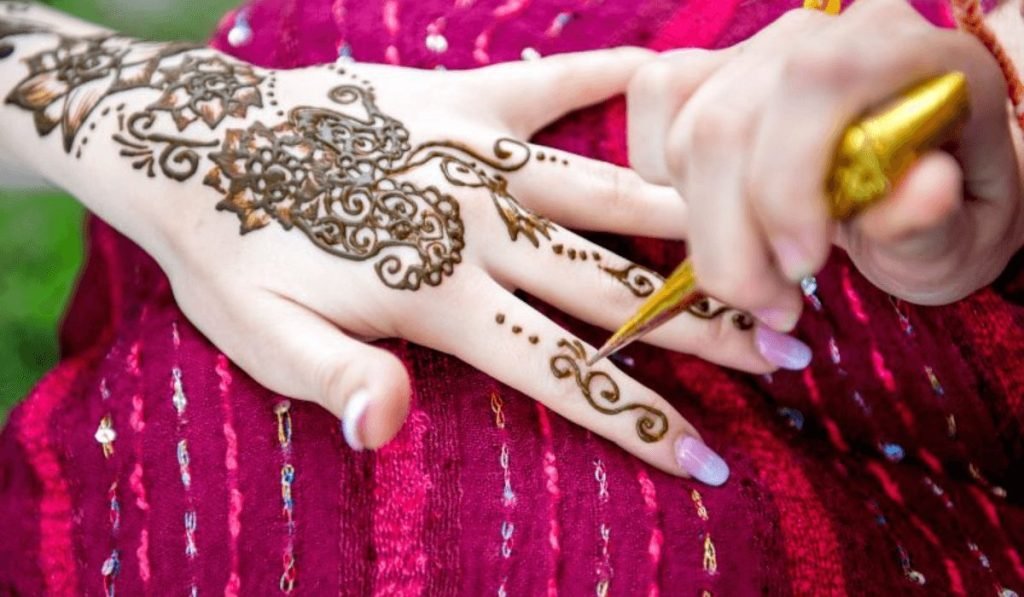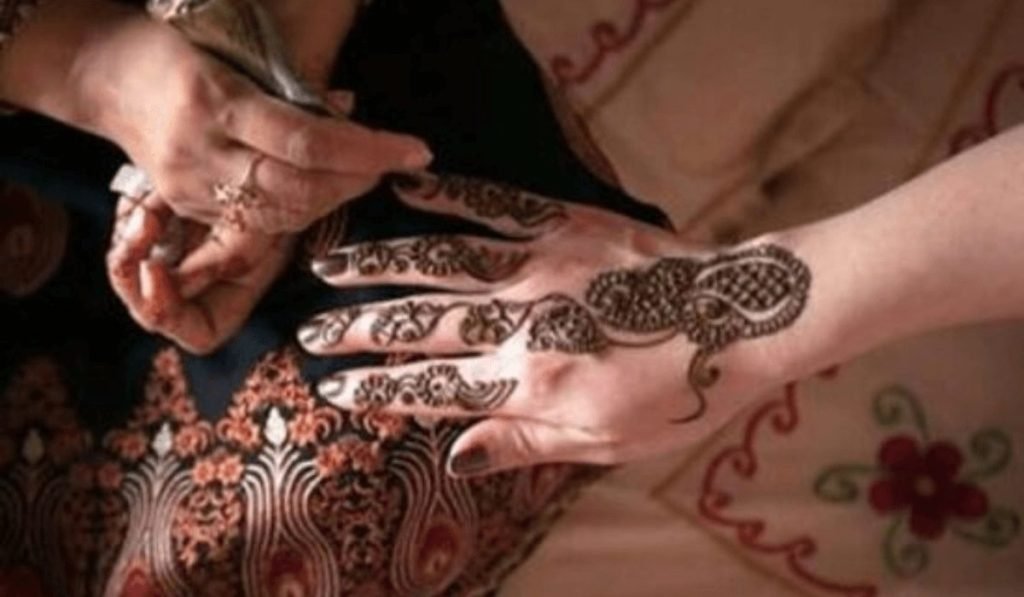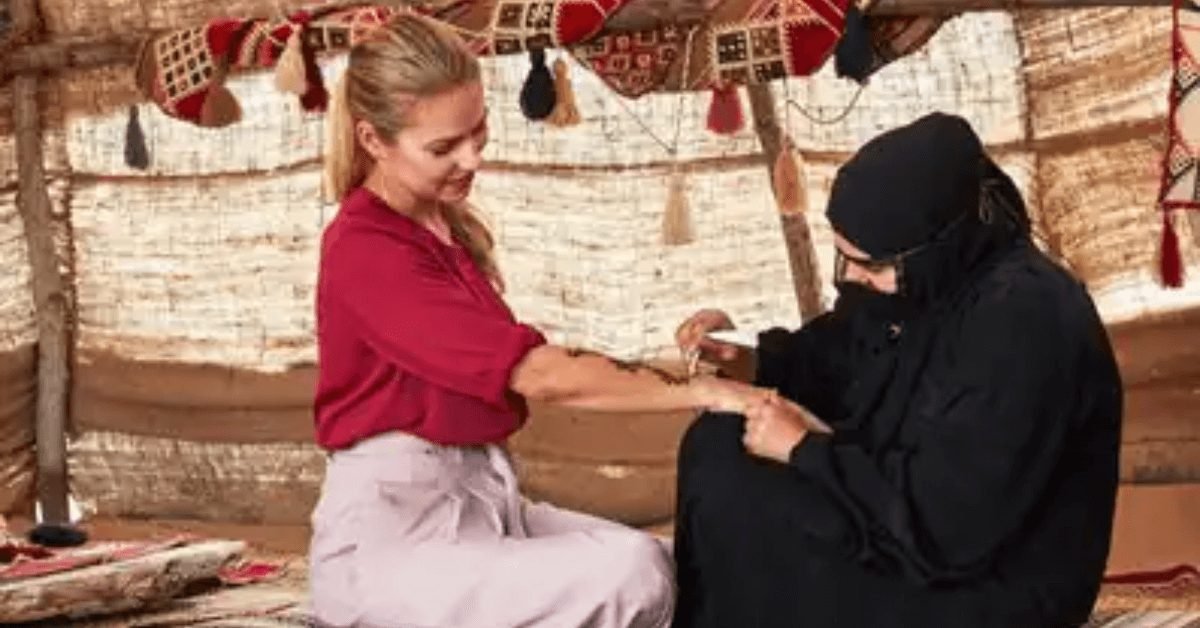Dubai’s desert safaris offer a unique blend of adventure and cultural immersion, attracting millions of tourists each year. Among the various activities available, henna painting stands out as a significant and popular choice. This article delves into the captivating world of henna art, exploring its cultural significance, appeal, application process, and the reasons why it has become a favorite activity at desert safaris in Dubai.
Dubai, a city known for its towering skyscrapers, luxurious resorts, and vibrant nightlife, offers visitors an extraordinary opportunity to experience the mystique of the desert. Desert safaris have become a must-do activity for travelers seeking a taste of traditional Emirati culture and breathtaking landscapes. Amidst the exhilarating dune bashing, camel rides, and falconry displays, henna painting emerges as a remarkable cultural tradition that captivates the hearts of tourists from around the world.
The Cultural Significance of Henna
Henna art, also known as mehndi, has a rich history deeply embedded in various cultures throughout the Middle East, Africa, and Asia. The origins of henna can be traced back thousands of years, with references found in ancient civilizations like Egypt and India. The natural dye obtained from the henna plant is revered for its auspicious qualities and is traditionally associated with blessings, good luck, and protection against evil spirits.

In the context of Dubai, henna painting carries immense cultural significance. It is an art form that allows locals and visitors alike to connect with Emirati heritage and traditions. Henna has played a pivotal role in Emirati celebrations, particularly weddings and festivals, where intricate henna designs adorn the hands and feet of women, symbolizing joy, beauty, and new beginnings. The art of henna transcends its aesthetic appeal, serving as a conduit for storytelling, cultural preservation, and identity.
Henna in Dubai’s Desert Safari Experience
Imagine the vast expanse of the Arabian Desert, with its rolling dunes stretching as far as the eye can see. Amidst this breathtaking landscape, henna painting emerges as an integral part of the desert safari experience in Dubai. As tourists embark on exhilarating desert adventures, they are greeted by skilled henna artists who are ready to adorn their hands and feet with beautiful and intricate henna designs.
Henna painting provides a unique opportunity for visitors to engage with Emirati culture firsthand. The desert safari becomes a canvas for cultural exchange as tourists learn about the significance of henna and its role in local traditions. The experience is heightened by the captivating stories shared by henna artists, who graciously impart their knowledge and passion for this ancient art form.
Understanding the Appeal of Henna Painting
In a world characterized by fast-paced lifestyles and ever-changing trends, the allure of traditional art forms is irresistible. Henna painting, with its timeless beauty and intricate designs, offers a retreat from the ephemeral nature of modernity. The process of henna application itself is a form of mindfulness, as it requires patience, focus, and attention to detail.
Beyond its aesthetic charm, henna painting provides individuals with a means of self-expression. Each henna design tells a unique story, with motifs and symbols that hold personal significance to the wearer. From celebrating milestones and expressing emotions to displaying cultural heritage, henna art becomes a wearable masterpiece that reflects individuality and creates a sense of connection to one’s roots.
Moreover, the therapeutic and relaxing effects of henna application cannot be overlooked. The cool henna paste, infused with natural ingredients, creates a soothing sensation as it is delicately applied to the skin. The process itself becomes a form of self-care, offering a moment of tranquility in the midst of a bustling desert safari experience.
The Process of Henna Painting at Desert Safaris
To truly appreciate the art of henna painting, one must understand the intricate process involved. Skilled henna artists, often adorned in traditional attire, meticulously apply the henna paste onto the hands and feet of eager recipients. The paste, made from crushed henna leaves and mixed with essential oils, is carefully piped onto the skin using a cone-shaped applicator.
The henna paste dries naturally, and during this time, it imparts its rich pigment onto the skin. Patience is key, as the longer the paste remains on the skin, the deeper and more long-lasting the resulting stain will be. Once the paste is completely dry, it is gently removed, revealing a striking reddish-brown stain. Over the next 24-48 hours, the henna design continues to darken, reaching its peak color and longevity.
The process of henna application is not only an art form but also a bonding experience between the henna artist and the recipient. As the design takes shape, conversations flow, stories are exchanged, and connections are forged. The henna artist’s expertise and skill play a significant role in ensuring the best possible outcome, creating a memorable experience for the recipient.
Henna Designs and Styles
Henna art encompasses a wide range of designs and styles, each with its unique characteristics and regional influences. At desert safaris in Dubai, visitors have the opportunity to explore a myriad of henna designs, ranging from traditional motifs to contemporary patterns.

Traditional henna designs often feature intricate floral patterns, geometric shapes, and symbols that carry deep cultural meaning. These designs are passed down through generations, preserving the heritage and customs of the region. Contemporary henna designs, on the other hand, embrace modern elements, incorporating elements of fusion and personalization. These designs cater to the diverse preferences of visitors and offer a contemporary twist on a traditional art form.
Henna designs can vary not only in their patterns but also in their placement on the body. While the hands and feet are the most commonly adorned areas, henna designs can extend to other parts of the body, such as the arms, legs, and even the back. The versatility of henna allows individuals to express their creativity and showcase their unique style.
Henna Painting as a Cultural Immersion Experience
Immerse yourself in the local culture of Dubai as you embrace henna painting. We delve into the significance of henna art as a bridge between tourists and locals, offering opportunities for cultural exchange, learning, and appreciation. Discover how henna art contributes to fostering cultural understanding and breaking down barriers.
Henna Painting and Social Bonding
Henna painting isn’t just an individual experience; it is an activity that brings people together. We explore the role of henna painting in fostering connections between tourists, whether it be among friends or families. Furthermore, we delve into how henna art becomes a way to commemorate special occasions, such as weddings, birthdays, and festivals, creating lasting bonds and cherished memories.
Henna Painting as a Souvenir

Take a piece of the desert safari experience home with you through henna art. We delve into the concept of henna as a unique and wearable art form, allowing visitors to preserve memories of their time in Dubai. Additionally, we provide care tips for maintaining henna designs, ensuring they stay vibrant and beautiful for as long as possible.
Cultural Sensitivity and Appreciation
Participating in henna painting requires cultural sensitivity and understanding. We highlight the importance of respecting local customs and traditions during the henna application process, emphasizing the need for cultural appreciation rather than appropriation. Together, let’s navigate the path of cultural sensitivity and celebrate henna art in a respectful manner.
Henna Painting Beyond the Desert Safari
The henna painting extends beyond the boundaries of desert safaris in Dubai. We explore the thriving henna industry in the city, including henna studios and salons that cater to henna enthusiasts year-round. Furthermore, we delve into the presence of henna in art, fashion, and body modification, showcasing its versatility and enduring appeal.
Conclusion
In conclusion, henna painting has rightfully earned its place as a popular activity at desert safaris in Dubai. We reflect on the significance and popularity of henna art, the cultural immersion it provides, and the social bonding it fosters. Encouraging readers to embark on their own henna painting adventures during their next desert safari, we invite them to embrace this ancient art form and discover the magic it holds.

